Hyundai Kona Luggage Test: How much cargo space?

The 2024 Hyundai Kona is considerably larger than its first-generation predecessor. This is best seen and appreciated in the back seat where the Kona goes from cramped to family-friendly, and in the cargo area that balloons by 6.3 cubic-feet to 25.5. That means the cargo area has gone from just about the smallest in the segment to one of the biggest.
Of course, the point of these tests is to put those cargo volumes to the test. Thankfully, I luggage tested the previous-generation Kona, so you’ll be finding out exactly how the two compare. I know, right, super exciting. I’ve also tested the Kia Niro, which shares a platform with the Kona, and consequently has very similar dimensions.
Now, considering the common platform with the Niro Electric, I am virtually certain that what you’re about to see here will also apply to the Hyundai Kona Electric. The main difference would be gas-powered Konas like the one here have a spare tire, whereas the Electric does not.
It sure doesn’t look big at first glance, but there’s also a lot going on here that might not be obvious at first glance.
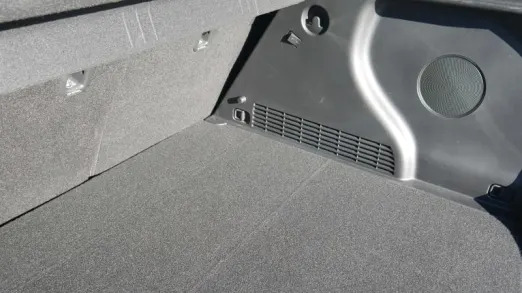
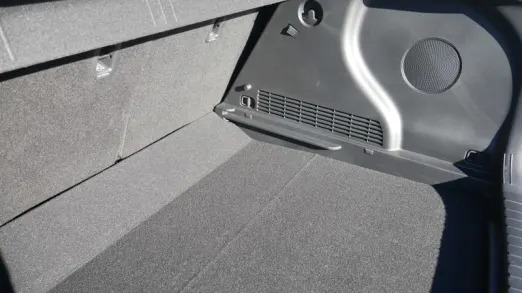
Like the original Kona and the Niro, there is a dual-level cargo floor. Also like the two of them, the floor is slightly angled at the base of the back seat when in its lowered position. Because of the opposite angle of the seatback above that already blocks bags from moving any deeper, this isn’t the problem you might suspect.
Now, as the high floor exists solely to provide a flat load floor with the back seat lowered, I only test with the lower floor height. Also, unlike the last Kona, there isn’t a useless foam bin thing sandwiched between the upper and lower floor heights you have to chuck in order to use the lower height.
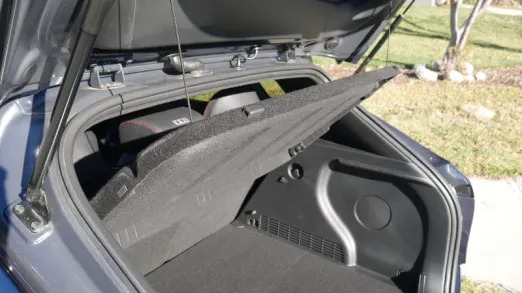
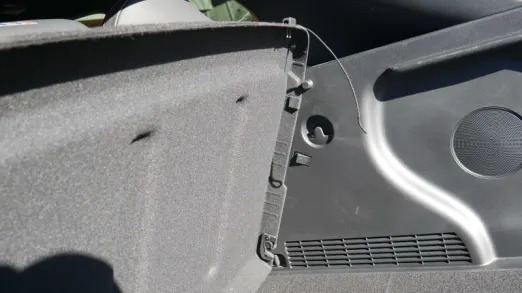
There is a big, hatchback-style, rigid cargo cover. Usually this is bad news for cargo capacity because you’re stuck with it if you need max space and can’t find someplace to stash the big, hatchback-style, rigid cargo cover. This would be the airport pickup doomsday scenario and the reason I test with and without cargo covers.
BUT! Look at the picture on the right. There are two little nubbins on the cargo area walls that the cargo cover is designed to lock into. One up top (totally normal) and one down below (totally weird). It took me a second to figure out what was going on, but then I realized the cargo cover is meant to lock into the bottom nubbin so it can be stored vertically against the seat back inside the Kona. Brilliant! At first glance, airport pick-up doomsday scenario solved!
I think I’ve seen something like this before, but dude, I have no idea what it was. I do, like, 50 of these things a year. The last Kona didn’t have this and my Niro didn’t even have a cover to test.
Where does this leave my testing regimen? I still tested with the cargo cover just to see what can fit below (the Hall & Oates Memorial Prying Eyes test) as well as with the cover stowed vertically. I’d remove it completely if necessary.
As with every Luggage Test, I use two midsize roller suitcases that would need to be checked in at the airport (26 inches long, 16 wide, 11 deep), two roll-aboard suitcases that just barely fit in the overhead (24L x 15W x 10D), and one smaller roll-aboard that fits easily (23L x 15W x 10D). I also include my wife’s fancy overnight bag just to spruce things up a bit (21L x 12W x 12D).
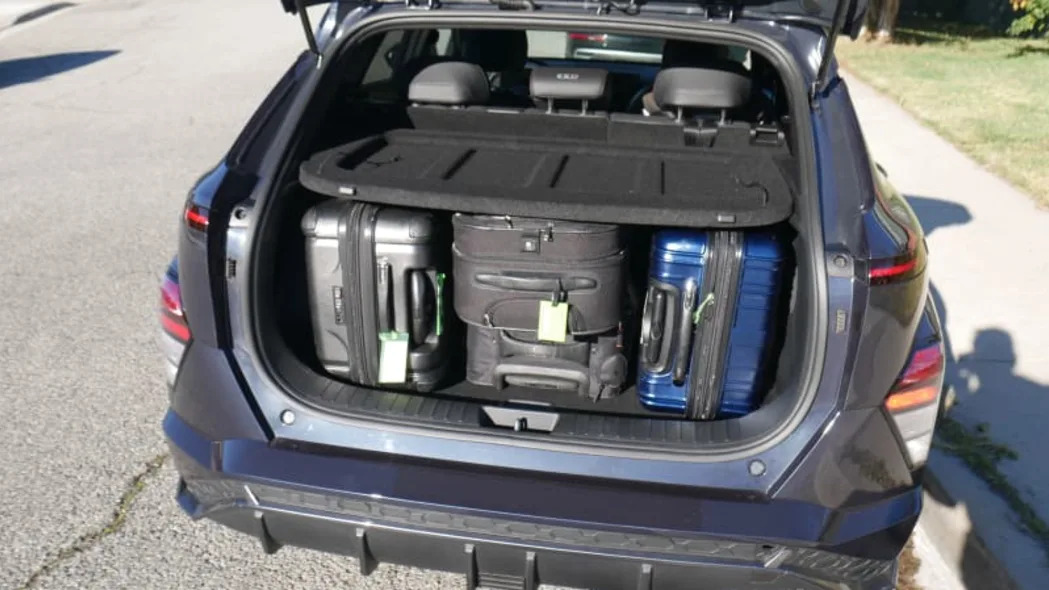
This would be the four biggest bags below the cargo cover. Now, the cargo cover did become dislodged, but whatever, it still covered the bags and the liftgate closed.
This is one more bag (the biggest one) than the last Kona could manage and exactly the same amount as the Chevy Trax.
OK, now lets stow the cargo cover.
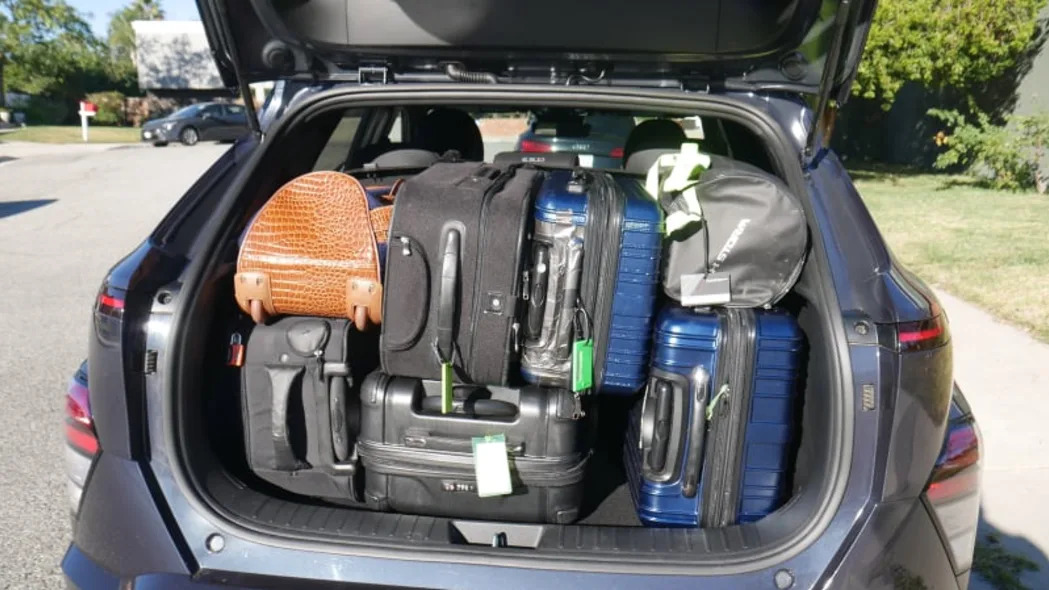
All the bags fit plus there was room left over for a little duffel bag. In other words, this is exactly the same as the Kia Niro hybrid and electric models (the PHEV doesn’t have the low floor option because there’s not enough room after sandwiching in both a battery pack and gas tank).
You can see the Niro and last-gen Kona below.
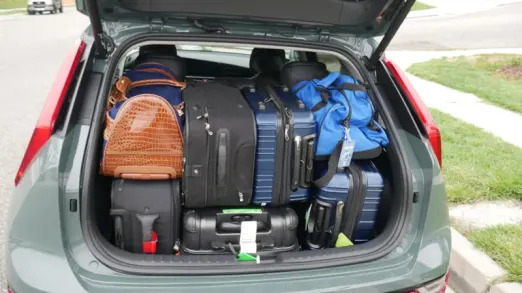
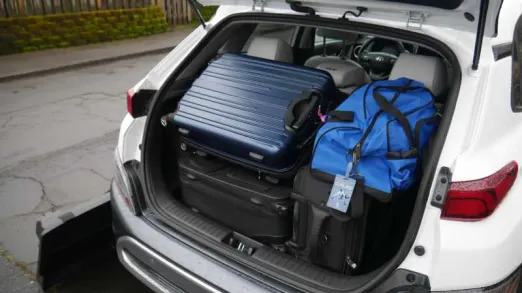
The old Kona wasn’t able to fit the biggest gray bag and had to swap that blue duffel bag for the fancy bag. It’s also pretty obvious that it wasn’t easy to load. So yeah, way worse.
As for how the new Kona compares to the segment, it’s well above average. Being able to fit all bags plus one puts it above all subcompact SUVs but the Bronco Sport, Volkswagen Taos and, just barely, the Seltos.


